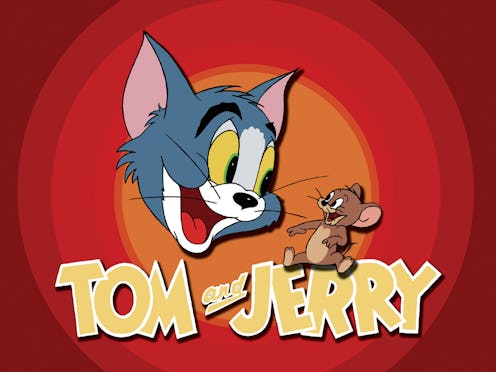Entertainment
Did 'Tom and Jerry' Deserve That Racism Warning?

Tom and Jerry is a cartoon that you, your parents, and your grandparents all probably grew up watching. The animated shorts were created by Hanna Barbera in 1940 and can still be seen somewhere on television even in 2014, 74 years since they were first broadcast to a viewing audience. However, the cartoon is getting some serious attention lately because of the fact that Amazon Prime gave Tom and Jerry a racism warning on their Instant streaming site. The disclaimer reads, "Tom and Jerry shorts may depict some ethnic and racial prejudices that were once commonplace in American society. Such depictions were wrong then and are wrong today."
It echoes a similar disclaimer made by Whoopi Goldberg on the Warner Home Video DVD release of the Tom and Jerry cartoons. According to Goldberg, "Removing Mammy Two Shoes [Tom and Jerry's racist caricature of an African-American stereotype] would be the same as pretending she never existed. The same is true for the other images and jokes that we wouldn't normally include in a mainstream cartoon today." Amazon Prime might just be following in Goldberg's footsteps, but the fact that they disclaim the racism instead of editing it out is so, so important.
Mammy Two Shoes is like a racist version of Miss Bellum from The Powerpuff Girls, in that her face is never shown in the cartoons. She's a matronly black woman who is often found in or around the kitchen dealing with the antics of Tom and Jerry as they wreak havoc on the home she cleans or later owns. She was also inspired by Hattie McDaniel's character, Mammy, in Gone with the Wind. McDaniel, as cinema buffs know, was not permitted to attend the Atlanta premiere of the movie she appeared in due to segregation laws of the time. That alone should tell you the kind of atmosphere that Mammy Two Shoes was a product of and why she is hardly a progressive or appropriate character to modern day audiences on this side of the Civil Rights Movement.
Obviously, as long-running as it is, the standards for what was acceptable to put in a Tom and Jerry cartoon was very different from the standards of what can be put in a cartoon today. Not only did Tom and Jerry feature racist characters or references, it also featured gratuitous violence that modern audiences might find a little shocking for something that is meant for children. Mammy Two Shoes and any other racist references are often removed or edited out of cartoons broadcast since the '80s, though she appears on the DVD collections. It's important that Amazon Prime chose not to edit Mammy Two Shoes out, but to warn about her appearances, for two reasons.
The first reason is that, as Goldberg pointed out, removing Mammy Two Shoes from the cartoon is the same as saying she never existed. You can enjoy something and discuss its problematic elements and Tom and Jerry remains a timeless and enjoyable cartoon even with the racist overtones. To remove those overtones is the same as taking an eraser to the history books and pretending that the closest people of color got to appearing in mainstream entertainment such as this was as a caricature, often played by a white person since they weren't allowed in whites-only theaters. It's like the 2011 controversy over removing the n word from Huckleberry Finn — political correctness should never come ahead of exposing and examining our country's history of racism.
The second reason is that she is an important learning tool for people watching the cartoons. By stating in the disclaimer that the racist undertones in Tom and Jerry are there and that they are wrong both in the past and the present, it carries on the lesson that racism of all kinds, in all forms, even and especially as used for entertainment, is wrong. By not excusing Tom and Jerry's clear racism simply because "it's a cartoon" and "society was different then", Amazon Prime is taking a stand against tolerating past racism just because times have changed and we as a society know better. Just because we know better doesn't make it any less wrong that our ancestors didn't and watching Tom and Jerry with that in mind makes it a more intellectually stimulating experience.
Through the character of Mammy Two Shoes, Tom and Jerry displays a quieter kind of racism than, say, Disney's taboo film Song of the South. She is racism embodied in the guise of progression. She gave the African American community of the past visibility in the form of intense stereotyping, African American representation geared toward the prejudiced views of the white audience, and the fact that there is still debate even today over whether or not Tom and Jerry is racist for including her just goes to show that racism is a pervasive learning experience. It hasn't truly faded and every day is a new opportunity to educate ourselves, one we should all endeavor to take before we give a free pass to characters like Mammy Two Shoes.
Image: -era, tenaflyviper/Tumblr; Giphy